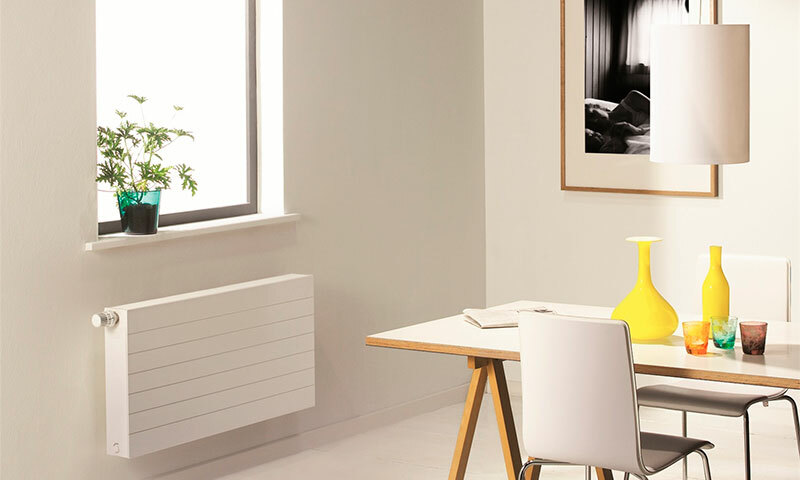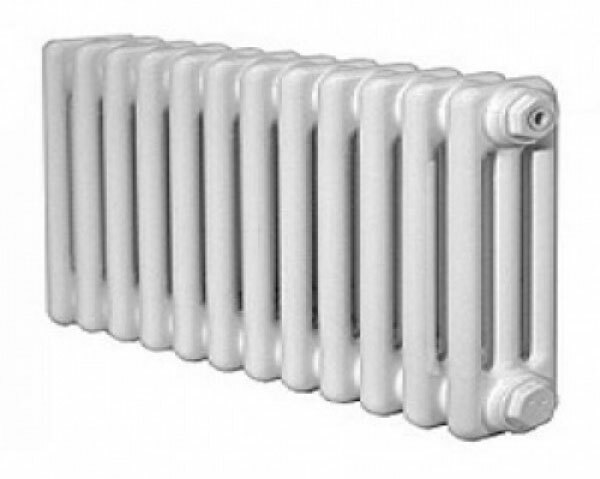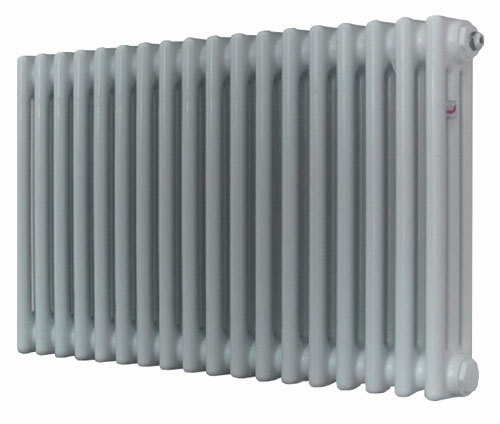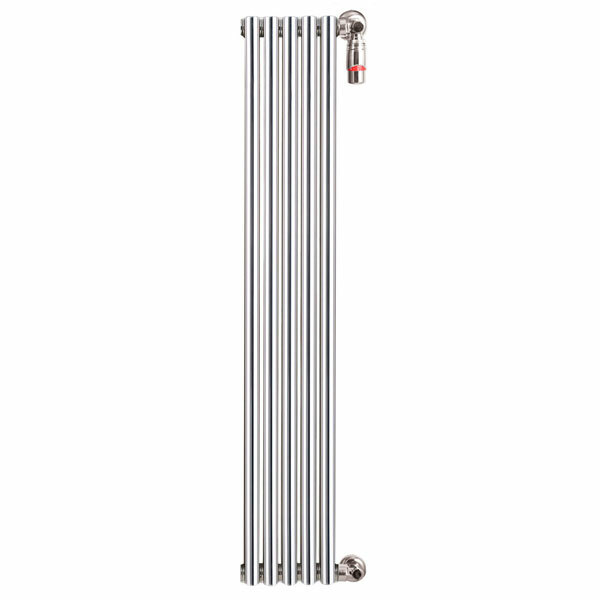The special climatic zone in which the majority of our compatriots live and the conditions of the long winter suggest a reverent attitude to various systems and elements of heating. One of such items, from the qualitative condition and characteristic features of which depends on the comfort and warmth of the room, are radiators of heating or simply - batteries.

Contents:
- Which radiator to choose from
- The best panel radiators
- The best tubular radiators
- Which steel radiator to buy
Which radiator to choose
? Radiators are different and they are divided into the types of material from which they are made:
- cast iron;
- aluminum;
- bimetallic;
- steel.
The most common, due to their low cost, increased heat output and a good designer look, are steel radiators. After reading the article, everyone will be able to learn about the most popular steel radiators on the domestic market and their characteristics.
The assortment of steel heating elements offered to a potential buyer on the market is wide and varied. They differ in size, price, design and manufacturing location.
Among the companies that have earned worldwide reputation in manufacturing steel radiators for heating, it is possible to single out:
1. Kermi
This is a German company that creates a diverse assortment of steel radiators using its own patented Therm X2 technology. They are capable of operating both in a single-tube and two-pipe heating system.
2. Purmo
The Finnish company that manufactures steel radiators of medium price class from the highest grade steel.
3. Arbonia
German company producing radiators of various shapes and colors of medium and premium class.
4. Zehnder
German company that produces high-quality radiators, which in their characteristics exceed the expensive bimetallic.
5. JSC "Mechanical Plant", St. Petersburg
Russian manufacturer of steel radiators, which has been manufacturing products since the 1960s.
6. JSC NITI "PROGRESS" Izhevsk
Izhevsk company produces steel radiators of the most modern design and high quality.
Steel heating radiators of all manufacturers are devices with high efficiency, withstand pressures up to 13 atmospheres.
The best panel radiators
Panel radiators are two or more compressed metal sheets, in which special channels are made, through which the liquid flows. The panels are connected to each other by special nozzles.
Kermi FTV( FKV) 22 300

Wall mounted panel radiator from Germany. Combines the heating metal panel, through which the liquid and the convection element located behind are circulating to increase the heat transfer. One radiator is capable of heating an area of 5 to 38 square meters. The working pressure is 10 bar.
Main advantages:
- German workmanship;
- increased heat output and efficiency;
- combines radiant heating and convection effect;
- the thickness of the radiator housing is minimal and is only 10 cm;
- aesthetic appearance.
Main disadvantages:
- no factory settings for activation of the convection panel.
Purmo Compact 22 500

Steel panel radiator from the manufacturer from Finland, intended for heating of any residential and industrial premises with a pressure in the system not exceeding 10 bar. Innovative technologies are used in the production of low-carbon alloy steel, from which the panels are made, and a special design of the radiator, in which the battery warms the space, not the wall.
Main advantages:
- increased heat output and efficiency;
- combines radiation and convection effects;
- aesthetic appearance and modern design.
Main disadvantages:
- sensitivity of the radiator to the quality of the coolant.
PRADO 22 500 600

One of the best Russian panel radiators that can provide heat and comfort in the room. Withstands the pressure of the heating system, not exceeding 9 bar. In addition, the radiator is made in a modern style and organically fit into the interior of any room.
Main advantages:
- the optimum parity of the price and quality;
- high operating temperature mode;
- special powder coating, increasing the heat transfer;
- possibility of removing the radiator without emptying the system;
- light weight;
- modern design.
The main disadvantages:
- with sharp temperature changes, there are microcracks on the paintwork.
Purmo Ramo Compact 11 500

A small and comfortable radiator with a thickness not exceeding 6.2 cm. Made of low-carbon cold-rolled steel and consists of two panels: beam and convection. Withstands the pressure of the heating system up to 10 bar. Thoughtful arrangement of the panels eliminates the accumulation of dust and dirt. It is recommended by specialists for an autonomous heating system.
Main advantages:
- compactness;
- increased heat dissipation;
- maximum performance and durability;
- minimum cost;
- corrosion protection.
Main disadvantages:
- is sensitive to water hammering.
The best tubular radiators
Steel tubular radiators are heating devices that are created: in one case from a series of vertical pipes connected between the top and bottom horizontal collector, in the other - from sections connected by welding. Tubular radiators in comparison with panel radiators have a large heat transfer, but the price for them is an order of magnitude higher than for panel radiators.
Zehnder Charleston 2200 1992

German tubular radiators of the highest quality. During manufacturing, a special test is carried out to seal the sections. Characterized by increased heat transfer and low convection effect. In addition, even the heavy weight of Zehnder Charleston 2200 1992 does not complicate the installation of one person.
Main advantages:
- original design;
- maximum heat dissipation;
- high operating temperature;
- easy maintenance;
- corrosion protection.
The main disadvantages:
- large mass.
Arbonia 3037 370 810

Wall-mounted tubular radiator with side connection. It is used in heating systems with a maximum pressure of 10 bar and a temperature of 120 ° C.High heat dissipation makes it possible to warm a room with one radiator up to 40 sq. M.m.
Main advantages:
- high reliability;
- simplicity of operation;
- high quality enamel coating;
- large margin for pressure testing;
- availability of corrosion protection.
Main disadvantages:
- high cost;
- the difficulty of self-assembly.
Zehnder Charleston 3057 566 1196

Wall-mounted tubular radiator with heat dissipation of 570 W.The device has a modern design and will fit organically into any design. Main advantages:
- presentable appearance;
- is resistant to the most aggressive coolant;
- high operating temperature;
- comparatively low price;
- manufacturer guarantee.
The main disadvantages:
- decrease in heat transfer at a drop in the temperature of the coolant.
Sunderja Estet 1200

The best design project among tubular radiators manufactured in Russia. It carries in itself both convection functions and the functions of radiation heating. The maximum operating temperature is up to 105 ° C.
Main advantages:
- original appearance;
- possibility of various uses;
- installation in both horizontal and vertical position;
- combination of radiation and convection effects.
Main disadvantages:
- limited in the temperature of the liquid heating system;
- inflated cost.
Which steel radiator to buy
Each steel radiator that will be installed indoors is selected based on specific conditions. There are various formulas and electronic calculators that calculate the calculation of the heat demand needed to heat a particular area of the room. In the jungle we will not go into, but we will tell you in simple language where and what kind of steel radiator it is necessary to install.
When choosing panel radiators, first of all you need to pay attention to the number of panels in the case:
1. If you plan to install a large area in a room, it is better to purchase a high-performance radiator consisting of three ribbed panels. They are characterized by the most powerful heat output and high cost.
2. For a large room radiators are also suitable with two panels, but a large one. Such radiators have a good thermal capacity and are in the middle price category.
3. For a small room, single-row radiators are ideal. They are the weakest in their thermal capacity. But this will be enough, besides the price for such radiators is much lower.
The number of sections must be given decisive importance in the selection of tubular radiators. The heat output of the radiator depends on this:
1. Normally, 2, 6, 8, 14-section tubular radiators are supplied to the market. In order to determine the required number of sections for a particular room, the following formula is applied: the area of the room is multiplied by 100 W and is divided by the heat output of one section of the radiator( 120 W).The result is the number of required sections.
2. When choosing a radiator, it is necessary to take into account the presence of such factors as: the presence of walls facing the street, the number of windows, the presence of niches under the radiators. With these factors, the number of sections increases by 10 - 20%.
